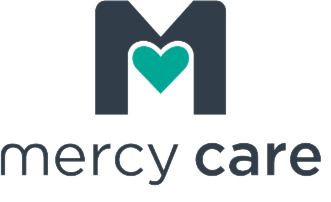Naltrexone hydrochloride is a synthetic opioid antidote that was invented in 1963. It was FDA-approved in 1984 for the treatment of heroin addiction. It was discovered that naltrexone is a mu-opioid antagonist that binds the opioid receptors in the brain and blocks the euphoric effects of the opiate, which leads to a reduction in drug-seeking behavior. The FDA later approved naltrexone for treating alcohol use disorder after discovering that it also mediated the effects of alcoholism. Naltrexone is used in medication-assisted treatment (MAT) to treat both Opioid Use Disorder (OUD) and Alcohol Use Disorder (AUD). It helps patients to stop and keep off opioids and alcohol use.
Additionally, naltrexone is used off-label to treat cholesteric pruritus in adults, and when combined with bupropion, it is used to treat obesity. Researchers are studying its use in people with stimulant use disorder, especially those with polydrug dependence on heroin, opioids, and amphetamine. Naltrexone is considered one of the best drugs for treating patients with opioid use disorder (OUD).
How to Use Naltrexone
Naltrexone is a prescription drug available as a pill, injection, or pellet implant. Naltrexone is an opioid antagonist that blocks the euphoric and sedative effects of drugs such as heroin, morphine, and codeine. It binds and blocks opioid receptors to reduce opioid cravings. If you relapse and use illicit drugs or take alcohol, naltrexone prevents the feeling of getting high. It would be best to abstain from alcohol for 3-7 days before taking naltrexone.
The pill form of naltrexone (ReVia, Depade) can be taken at 50 mg once per day. The pill can also be taken once every other day, once every third day, or once daily except on a designated day of the week, like on a Sunday. You should not double dose if you forget to take your pill; instead, take it as soon as possible, even if it is not close to the usual time when the dose is taken.
The injectable form of the drug (Vivitrol) is administered at 380 mg intramuscular once a month. Naltrexone can be prescribed by any health provider who is licensed to prescribe medications. Naltrexone is prescribed as part of a comprehensive treatment plan that includes therapy and participation in support programs.
Naltrexone treatment is a short-term medication-supported recovery (MSR) therapy designed to help patients avoid relapses in their early recovery stages. This is achieved by blocking the pleasurable sensations of alcohol and opioid use dependency, allowing the patient to stabilize in recovery in the long run. The doctor will begin to taper off naltrexone after three to six months. Some patients may benefit from long-term MSR, depending on their condition.
Who Can Take Naltrexone?
Although naltrexone helps treat opioid addiction and alcohol use disorders, it is not a cure and does not work for every recovering patient. It is suitable for people who are ready to quit alcohol or using drugs and should be used in combination with counseling and other therapies for a holistic approach. It is important to talk to your doctor before beginning naltrexone treatment, especially if you have the following situations:
- Currently or actively using illicit opioids
- Still detoxing from alcohol
- Experiencing active opioid withdrawal
- Are not motivated to reduce or quit drinking
- Are currently taking any medication that contains opioids for pain, cold, or diarrhea
- Pregnant, planning to get pregnant, or breastfeeding
- Dealing with liver or kidney problems or other medical conditions
- Have hemophilia or other bleeding problems
- Are taking prescriptions and non-prescription medicines, vitamins, and herbal supplements
- Currently under treatment for an OUD or AUD
- Are allergic to naltrexone or any of the ingredients or the liquid used to mix the extended-release naltrexone
It is important to inform your doctor about the kinds of medications you are using if any. If you are scheduled to undergo surgery, you should stop taking naltrexone at least 72 hours prior.
Naltrexone Side Effects
Most patients using naltrexone do not experience severe side effects. However, you may experience some side effects from using naltrexone. These side effects may be the same that occur due to opiate withdrawal. An adjustment in dosage or change of medication may help remedy the issue. Common side effects of naltrexone include:
- Nausea
- Dizziness
- Vomiting
- Changes in appetite
- Diarrhea
- Abdominal cramps
- Headache
- Runny nose
- Muscle pain
- Rash
- Constipation
- Restlessness
- Anxiety
- Sleep pattern disturbance
Other rare but severe side effects of naltrexone include some of the following:
- Hypersensitivity to the drug
- Shortness of breath
- Liver toxicity and failure
- Hallucinations
- Suicidal thoughts
- Blurred vision
- Swelling in the face, feet, and legs
If you experience any side effects, you should contact your health provider immediately before stopping its usage.
Sources
https://www.ncbi.nlm.nih.gov/books/NBK534811/
https://drugabuse.com/treatment/medications/naltrexone/
https://www.addictioncenter.com/alcohol/naltrexone-for-alcoholism-treatment/






